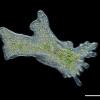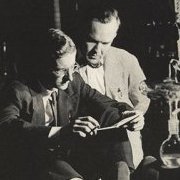-
Posts
17 -
Joined
-
Last visited
Profile Information
-
Favorite Area of Science
Biology, Medicine
Recent Profile Visitors
1840 profile views
Uncommon Ancestor's Achievements

Quark (2/13)
3
Reputation
-
Uncommon Ancestor started following Would it ever be possible to repair the genes of someone who has a genetic defect, but is already an adult? , I would like some catchy and creative name suggestions for my science fair experiment (puns would be appreciated?) , Why does chromosome multiplicity lead to abnormalities? and 5 others
-

Why does chromosome multiplicity lead to abnormalities?
Uncommon Ancestor posted a topic in Genetics
So I was reading this recent thread about people having multiple X chromosomes and both Klinefelter syndrome and the triple X syndrome were mentioned. While it would be apparently more obvious why XXY people might have problems (feminisation of males bearing a Y chromosome), I can't reach to understand why does having more than two X chromosomes lead to abnormalities in females. My knowledge about the subject is pretty basic, so even though I can understand why the existence of a single one chromosome could trigger the apparition of otherwise recessive traits (such as hemophilia and daltonism) I can't figure out why in the reverse case things go wrong as well. Could it have something to do with over-expression of some genes? I don't know. That applies both to 3X syndrome and to Down's, amongst other cases, too. Also, as far as I know, similar cases in plants tend not to cause problems at all (polyploidy), so why should it cause trouble in humans? An explanation would be highly appreciated, thanks in advance. -
First of all, we must be clear about whether we are talking about anal intercourse happening in any kind of animals, any kind of homosexual intercourse or just anal intercourse happening between animals from the same sex. If its the third one, there's clearly no point on it as long as exclusively homosexual animals (fitness=0, in principle) are concerned, but any other possible option involves either parental capital being supposedly "wasted" in non-reproducing descendence or reproducing animals engaging in a risky activity. Sex will always mean taking risks, but there are clear advantages for vaginal intercourse which justify those risks. However, anal intercourse carries a lot of risks but none possibility of that advantage (=reproduction), so it's difficult to explain unless one argues that those animals are "too horny" to make a difference between similar holes, that is, that useful instincts for reproducing carry at the same time the possibility of getting into the wrong hole sometimes.
-

Human Effective Population Sizes Are Such A Mess
Uncommon Ancestor replied to Uncommon Ancestor's topic in Biology
Well, I'm not sure what is meant by quantity of interest. I assume (based on what I've found in Google) that it menas the measure that's actually looked to in raw data. If so, I think they all use Linkage Disequilibrium to estimate Ne, even if other papers I've not referenced use Hardy-Weimberg Equilibrium deviation, or both. However, I don't see why such huge disparities were to be expected if different quantity of interest were used, given that the final mesure was still the same. Could you please tell me why? -
Hi, I was doing some online resarch about effective population sizes for different ethnic groups in order to correlate these data with other parameters in the future. Little did I know that it would be such a tricky thing. I would seem that the standard number for human total Ne (effective population size) is roughly 10,000, but half the papers only cite that mesure to discredit it. Most estimations vary between 20,000 and 5,000 for the whole human population, yet some publied results are really weird. Maybe an extreme case would be Park (2014) which states that current Korean effective population size is 30 times bigger than Han Chinese's, no less (3,000 vs 91,000). Other papers also display population-specific effective sizes higher than 10,000, while some argue that 10,000 is an overestimate. Such a mess. It appears that different methods give different results, but even the same methods over the same database give different results for different papers. As here is discussed, probably different authors mean different different things when speaking about human Ne. Most papers infer different effective population sizes for different times in human history. I confess I get lost here, as I both don't know how can we estimate ancient effective population sizes and, more importantly, don't understand why is it rellevant for discussions about current populations, as I thought current Ne did account for bottlencks and similar. Normally I would ask for help/advice, but I hopefully will be able to reach a coherent database for myself (or maybe not, who knows), so my primary point is that I'm really interested about why does data vary so much between different studies as well as why would anyone publy an article saying Koreans have a larger Ne than Chinese people (or even humanity) without blinking an eye. I mean, there's shurely something that explains why would anyone believe that data indicating that is believable, but I can't think about anything. Now, isn't it messy?
-
I may be wrong, but I'd say b) is 6 and c) is 12. Anyway, that belongs to the Homerwork Help subforum, I fear.
-
That was more or less my point, that recombination isn't likely to play an important part (yes, hormone regulation is also likely to be regulated by recombinable genes, to an extent, I didn't realise that, my bad). However, I fear I have to disagree about the hormone-lack hypotesis (only to an extent): Correct me if I'm wrong, but I thought those same hormones triggered sexual drive, so low hormone levels would rather kill sexual drive than change it's target, I guess. Of course, a change in wich hormone raises levels at some stage of life would actually be a different thing. That remains to test. Focusing on human-like mechanisms, my first reaction is to reject any implication of hormones themselves in homosexuality, as bot gay man and women usually display the rest of the sexual-specific traits normally, which doesn't go well with a lack of correct sex-specific hormones. Of course I might be wrong. Of course, there are exceptions. And of course that may be very different for other species. But I feel it fails to work as a general explanation for the phenomenon, assuming humans aren't the weirdo case here. Yet, hormones regulate sex drive, so yeah, probably they are still rellevant here, just not (or not necessarily) in that way. Thank you for answering.
-
Well, it's actually an exception, as sexual traits are primarly given by a set of genes located in the heterochromosomes in many species, incluiding all mammals. And, when frooming the heterochromatic sex (males, in our case), those chromosomes can't actually recombinate except for tinny, non-sexual related, zones on the top and the bottom of those chromosomes. That means there is small variation in the main, sexual-defining Y (or whatever single-sex chromosome we're talking about) chromosome between individuals, far less, and the sole motor of that variation is mutation. Of course, there are a few exceptions caused by chromosomal translocations, by rare hormone exposure etc., but they are rare exceptions, not the norm. Also, even if there is some variation, maleness-femaleness distribution is fairly discrete for most traits. For instance, I'm a rather short male for my country and age (anyway, within the normal range of variation, not a pathological or rare case) so most males of my age and country I know are taller than me, but I'm are, at the same time, taller than the great majority of females I know from my country and age. Of course, there are some females above my heigth, but they are rare (and I'm talking about young people in wich there is far more probability that males will grow in heigth than there is chance for our female counterparts), so ranges of distribution in this sexual dimorphism barely overlap. That same thing probably happens with strength, muscular mass, hormone levels and aggressiveness between males. That just shows how much of sexual dimorphism depends on the presence of just one, wee, not-so-variable chromosome (wich basicaly contains the SRY locus), as females and males share any other chromosome in similar frequencies (except for its pair the X heterochomosome, logically). Inter-sex variation is due to other causes much of the time (note that Y chromosome can be expected to be identical or with minor variation within the males of a small population, thus not correlating with male traits variance, which is far greater).
-
That's interesting because it seems to reflect the actual behaviour observed in number of species. At least, I know that Spanish Fighting Bulls, as they are being kept in all-male enclosures, design an "effeminate" (shy or weak) mate that will be sodomised* by several partners. Also, @Moontanman above says it also happens with elephants. Those both are very aggressive animals, so they would probably fight each other until the death of all the rivals, with great damage for the winner, if they couldn't canalise their sexual impulses but accessing the harems. Given that in some cases harems and their offspring will depend upon the protection of the dominant male(s), a damaged male could mean a great lack of females in future years. Also, young mature males probably have to wait a gape of time between the moment they have "sexual urges" and the time when they can actually outcompete older males in a fight (just as it happens in humans), so "sodomy" could fill the gap and prevent them from dying before ever mating. However, those examples seem to be more of a b-option bisexuality than of a true homosexuality as we understand it in humans. A possible better explanation for true homosexuality would probably be to keep the group united (with a bigger proportion of bisexuals and a lower rate of homosexuals, as it seems that could happen in humans), in cases where not all males are capable of mating females each year but they necessary for group deffense (as would happen in humans or yaks). It's a kind of keen selection, to which @swansont referred. There are other kinds of keen selection, like eusociality for instance, but there are few examples of eusocial vertebrates. *Sorry for those that dislike the word, so I do, but failed to find a synonym. Interpret here "sodomy" as "anal intercourse",with no derogatoryality intended.
-
Hi everyone, I've read a paper (open-access link below) about evolution and development in ratite wings. It compares the rates of development during embryo ontogeny of wing in ostrich and emu (wich is known that developed their flightlessness independently) and compares it to normal wing development in flighted birds. As the rates are quite normal for a flighted bird in ostrich, wing proportions ain relation to the body are only slightly below the normal and the ostrich has a very massive body, it concludes that it is due to general peramorphosis of the body. On the other hand, emu wing growth rates are very, very slow and wing/body proportions are far below normal, it concludes that neoteny afects emu's wing (wich is quite clear according to the few I know about the subject). However, there's a furhter development of conclusions wich I don't trully understand. The paper says that data suggest that ostrich wings became primarly useless due to body outgrowth so it was too heavy to sustain in the air, while emu ancestor probably reduced it's wings while having a small body size, followed by growth of the already flightless body. How is that deduced from the heterochronic mechanisms displayed (peramorphosis/neoteny)? I'd be glad someone give me a clue. I've to say that I'm just a newbie, so I'm probably losing a whole lot of relevant well-known things, I figure. Anyways, here you've got the paper, I'ts scarcely 3 pages long, and most relevant information is on the last one: Faux, C., & Field, D. (2017). Distinct developmental pathways underlie independent losses of flight in ratites. Biology Letters, 13(7), 20170234.
-
Oh, thanks! That's both really meaningful and useful for my purpouses. Thank you so much! Also, I've read this from the Wiki: That works for situations where there is a competence between the diretion of selection and the (kind of) direction of drift. However, is there a similar equation for situations of convergence between both selection's and drift's directions? Thank you all
-
Hi, I was wondering wich population size would be small enough in order to make genetic drift to become at least as important as selection in determining evolution. I think I'd read in an old book by Dobzhansky that Nμ≥1 (N being the effective population size and μ being the mutation rate) was a good mesure, but I'm not sure wether that's still considered valid or if any new mesures are widespread or standard among scientists. Anyone has a clue on this? Thank you all PD: Should I rather post this thread on the Evolution, Morphology and Exobiology subforum or is it OK here?
-
I think that studies on viral genic therapy may be sort of what you are looking for. It seems to have worked well in dogs so far. Check this: https://search.proquest.com/openview/0d25a5a854c1806b64f11803c52f11bf/1?pq-origsite=gscholar&cbl=33429 .
- 1 reply
-
1
-

How does Hardy-Weinberg principle predict equilibrium?
Uncommon Ancestor replied to Uncommon Ancestor's topic in Genetics
It's because there happen to be three possible combinations involving 2 alleles (A and a) in a diploid population. p is the frequency for A allele and q is the frequency for a. The frequency of each allele is 1 minus the other one, but each organism has two alleles in its genome. AA is dominant homozigote and its frequency is p^2 aa is recessive homozigote and its frequency is q^2 But there are also Aa members, heterozigotes, whose frequency is 2pq. The fact that p^2+2pq+q^2=1 is deduced from the fact that (p+q)^2=1, 1 being the addition of all the frequencies in a population (of course, the calculus changes a little bit if it involves more than 2 alleles). In fact, AA and Aa memebers are assumed to have an equal phenotype (physical appearence), so it is not possible to know whether are they homozigote or heterozigote without other techniques than physical checking. Hardy-Weinberg can be used to estimate how many habitants in a population are Aa and how many are AA, knowing only how many of them are aa members. Even if so, as Hardy-Weinberg equilibrium assumes some ideal conditions that dont occur in actual populations (for instance, an infinite population or no evolution at all), our estimation can differ slighty (or not so slighty) from the real values. -

How does Hardy-Weinberg principle predict equilibrium?
Uncommon Ancestor replied to Uncommon Ancestor's topic in Genetics
Ok, now I have finally understood. It has took me days of Internet research, but now I finally do understand it. If someone else finds himself in a similar situation, he can ask me. The aswer is a bit tricky, though.




